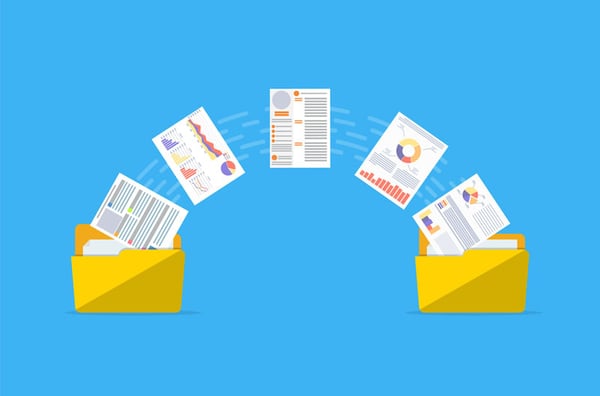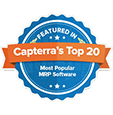
The fact that you’re considering an Enterprise Resource Planning (ERP) purchase is likely due to one of two scenarios:
You’re looking for one, streamlined way to house most of your software capabilities in one package, implemented and maintained by one source. Once you make the decision to implement an ERP, the task of setting a budget can be somewhat daunting. It doesn’t have to be.
Despite its all-encompassing size, the process of setting a budget for your ERP purchase is similar to any other purchase. You’ll need to take stock of all the departments that the ERP will cover — manufacturing, human resources, accounting, operations, supply chain, finance, payroll — but then break all of this down into manageable steps.
When we think about technical costs, we look at things like software, hardware, database, operating system, interfaces, customizations, system validation (if your industry is regulated), network and technical communications, hosting, and maintenance and support. Survey your technical teams to gain an understanding of the types of software and hardware they currently use, and document it all in a central spreadsheet or file.
As with many large initiatives, some costs are easy to overlook. In the case of data migration, it’s important not to underestimate those related to extraction from the legacy system(s), cleansing and accuracy, and entry into the new system. Look to your IT teams for particulars about software and hardware costs, as well as labor costs and any hidden costs you’ll incur by taking developers and technicians away from other business-critical tasks.
It’s understandable that costs related to labor are less obvious, but it’s important to plan for both the internal and external support required for the ERP selection and its implementation. When totaling about the cost of human resources, think about priorities like education, training, testing, project management, change management, potential temporary labor, and external vendor support.
Once you’ve carefully considered each of these factors and understand that there may be hidden costs associated with each, the process of setting your budget will become clearer.

Among the many reasons to implement a new ERP system is the opportunity to increase productivity, improve business intelligence, accelerate order to cash cycle, and reduce labor costs. In order to sell these benefits, you’ll need to have a solid Return on Investment (ROI) projection.
Pull out the spreadsheets where you calculated the departmental investments in the move. Then use a business intelligence tool or reporting modules to make projections from your current data. If your manufacturing teams shaved an hour off of production of each product, how much would that save you overall? If your inventory was reduced across your supply chain, how much would you save on extra warehousing and shipping costs every year? Add these projections into your budgeting spreadsheet.
This is an area where it’s critical that you pay attention to what really makes sense for your business. The answer is different for every company and every industry. Each ERP provider will have their own pricing models and options, but here are the two most common.
This allows your company to host the software on your own servers onsite. This can be a great option for large companies, but for small to mid-sized businesses, it can be difficult to manage without the infrastructure to support it. Perpetual licensing is available for both cloud and on-premise solutions.
This cost model is available for cloud installations and is more popular with smaller businesses looking to grow into their enterprise solution, or those needing more flexibility and lower cost of entry. There is no need to invest in infrastructure and upfront licensing fees. Subscription fees are based on user numbers, transaction volume or annual revenue.
Once you begin looking at all of the available features of a new ERP, a lot of features will sound exciting, but remember that each of those features comes with an extra cost. Be careful not to be oversold on features you’ll never use. Choose only those must-haves that you need immediately like manufacturing, accounting, and inventory management, and those you anticipate needing with projected future growth that could be costly to retrofit down the road.
Depending on whether or not you go with an on-premise or cloud model will greatly determine your installation costs. After assessing your infrastructure to see if it’s capable of hosting the software and the costs of expansion or deciding to go with a cloud-based system, you’ll need to conduct Request for Information (RFIs) from your vendors to get a clearer picture of the actual costs of implementation.
Go back to where you calculated those hidden and forgotten costs like training (will you have to implement a learning management system or employee engagement platform to help train your users?), customization directly from the ERP vendor, and data conversion either by your internal IT resources or through the ERP vendor, and keep that on-hand to compare to what the vendors give you. It’s a good idea to build a 10% contingency budget into your ROI projection to cover unforeseen costs such as these.
Once you’ve gotten this far, it’s time to start the process of getting quotes from vendors.
Again, be sure that you have a strong ROI projection as you’re going through the process of determining costs and putting your budget together. Use our simple ROI Calculator → to get a better understanding of what to expect.
Keep in mind the reason that you’re getting serious about making an ERP purchase. Your company is looking to streamline processes, increase productivity, improve data usage, reduce labor costs, and increase profits. As you set your ERP budget, keep in mind the importance of anticipating your company’s current and expanding needs, be realistic about your current infrastructure, and plan for unforeseen costs.
xTuple ERP, a CAI Software solution, is an affordable yet robust ERP platform that is adaptable to countless industries and businesses. Our team of specialists provide a focused, strategic approach in implementing the ERP and configuring it to your specific needs. Connect with us today to see if xTuple ERP is right for your business. Request a demo by clicking here →.
Contact
xTuple
A CAI Software Company
24 Albion Rd, Suite 230
Lincoln, RI 02865
+1-757-461-3022
About
"xTuple" (verb) — to grow; to increase exponentially. Our mission is to help manufacturing and inventory-centric companies use management software and best practices to grow their business profitably.